Bell is developing a new line of armed capabilities for its civil helicopters to capitalize on a market opened by Russia’s war on Ukraine. The international response to Russia’s invasion has brought punishing sanctions down on the country’s rotorcraft industry and inspired a turn to the West for countries that traditionally operate Russian-built or designed military helicopters, Bell executives believe.
For countries that need a light attack helicopter but either can’t afford or don’t need the full-on military capabilities of an H-1, Bell is now offering a bolt-on weapons kit for some of its civilian helicopters. They are starting with the single-engine, four-bladed 407, many of which are in military and government service worldwide. The company sees a market opening in Eastern Europe, Africa, and elsewhere for an armed special-mission variant of the civil 407, which sports an aftermarket weapons mount system that carry everything from machine guns to guided rockets.
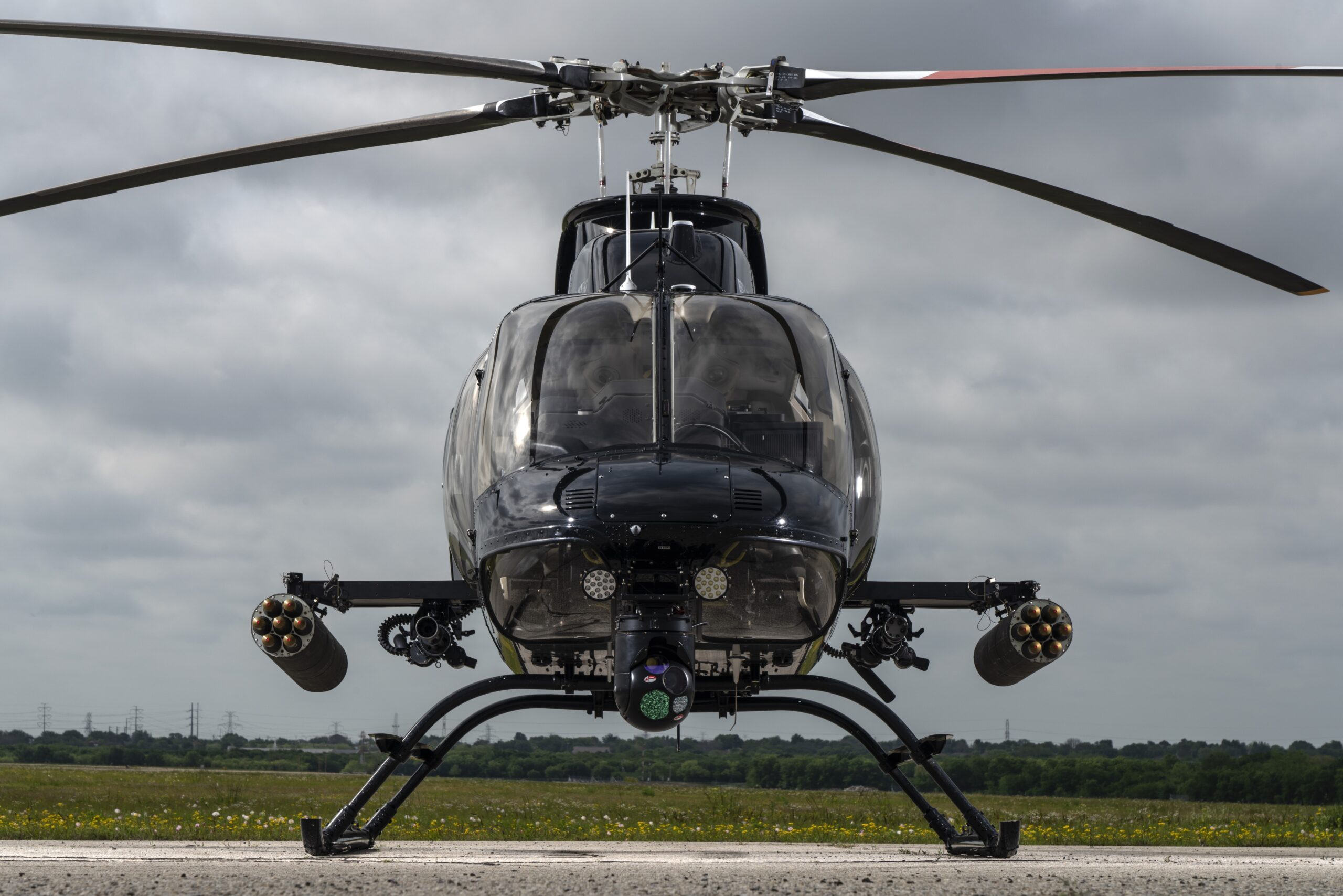
The kit sports four weapon mounting stations that can hold Hellfire missiles, M134 Miniguns, DAP-6 gun pods, GAU-19/B machine guns, GP-19 gun pods, HMP250/400 gun pods and M260 or M261 rocket launchers.
The company already has mounted what appears to be a CFD International Ordnance Mounting System (OMS) on a civil 407 and range-tested it in preparation for in-house flight qualification. The weapon mounting system, actually a plank fitted in the helicopter’s rear cabin, is similar to the Dillon Aero Mission Configurable Aircraft System, or MCAS, which is also available for the 407. Dillon Aero also makes a six-mount version with tip-mounts for common launch tubes capable of firing a variety of air-launched weapons, including drones.
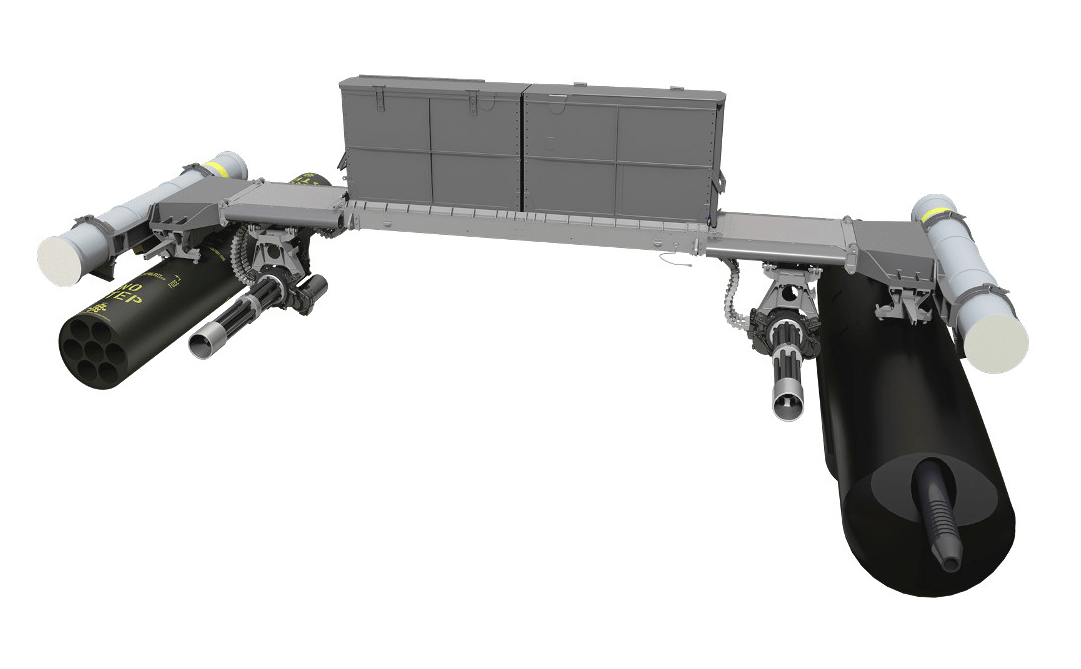
CFD’s OMS can mount various external machine guns that feed from magazines inside the helicopter’s cabin or those that can be loaded with self-contained pods. The one seen on Jan. 27 by The War Zone during a visit to Bell’s plant in Texas was loaded with twin M134 Miniguns inboard on either side and M261 rocket pods outboard.
The pods can accommodate advanced precision kill weapon system (APKWS) guided rockets, according to Michael Deslatte, Bell’s vice president of H-1 and special-mission aircraft. The kit also includes a Wescam MX-10 sensor ball for targeting and surveillance applications. This combination would give the armed 407 extremely precise and flexible guided weapons capabilities, with a relatively deep magazine capacity, and all at comparatively very low cost.
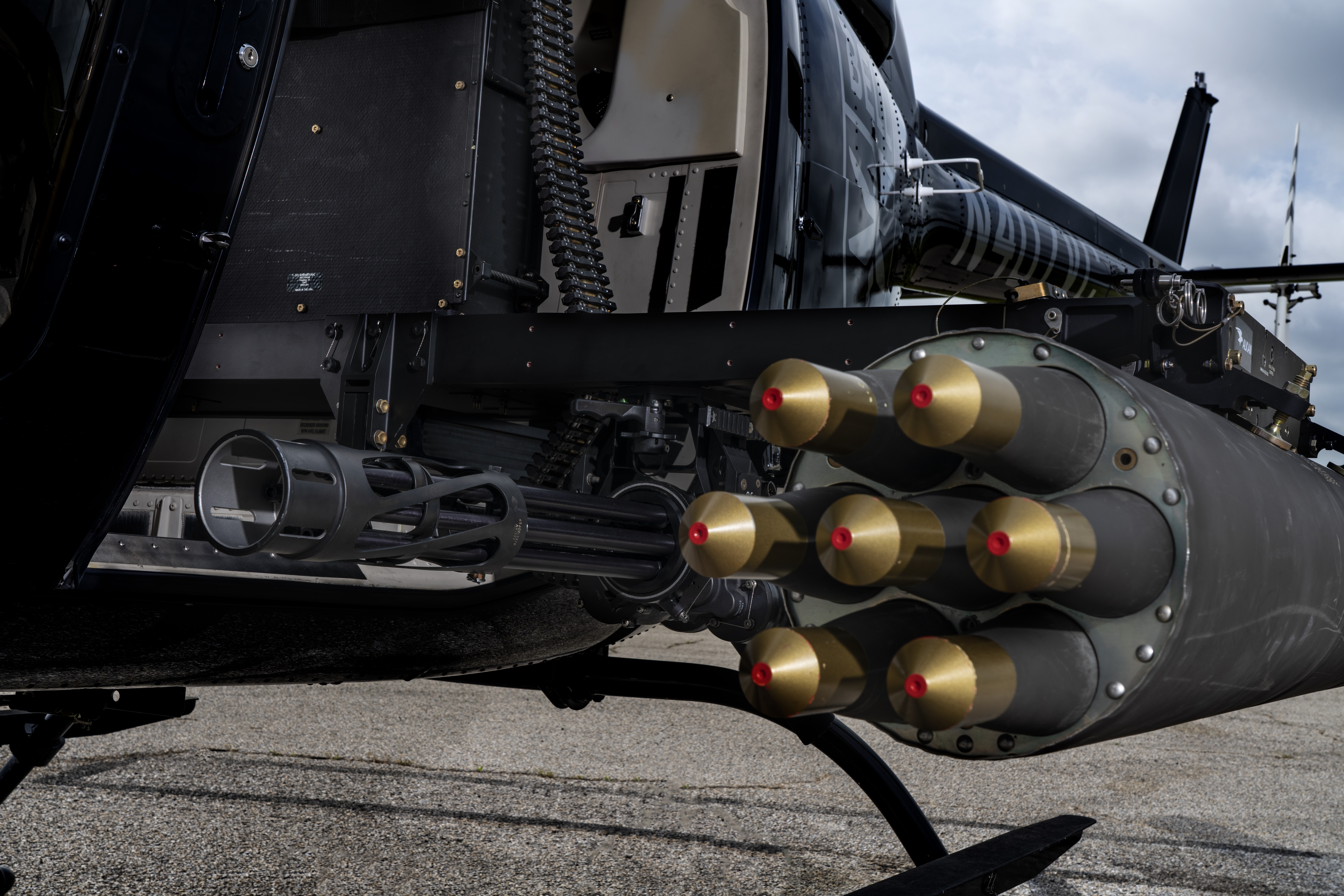
In the space where seats fit in a VIP or utility configuration, the system can accommodate 3,000 or 1,500 round 7.62mm magazines and/or 600 round .50 caliber magazines.
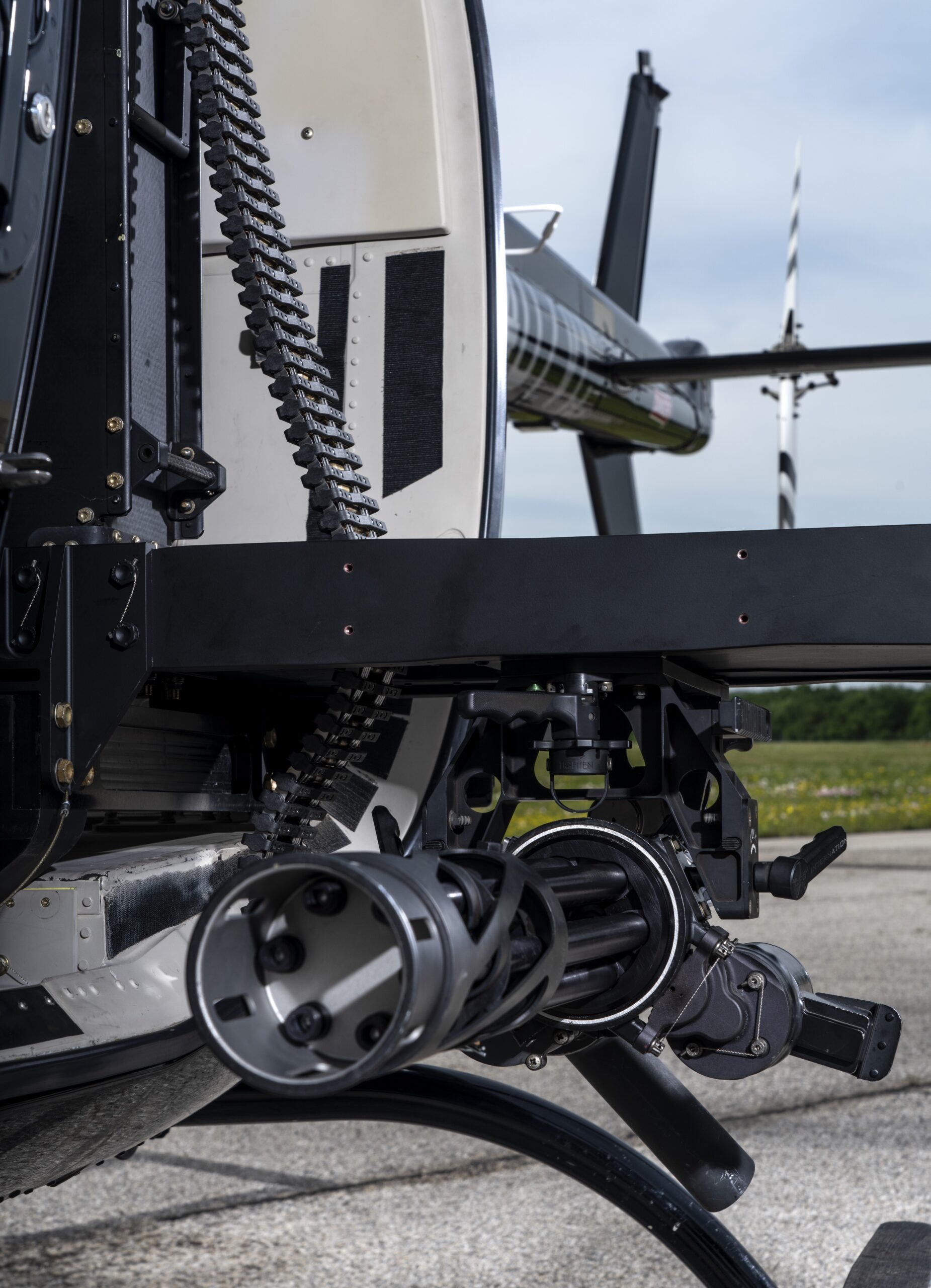
Aside from the weapons kit, which is available on new-build aircraft or as a retrofit to existing fleets, Bell also offers a menu of aircraft survivability options, including chaff and flare dispensers, Deslatte said.
Bell already sells civil helicopters like the 407, 412, and 429 to countries all around the world. It has a widely established global customer support infrastructure and can offer a fully-packaged armed variant with lifecycle support included.
This new offering is not the first time Bell 407s have been armed for combat. Iraq has been flying a militarized version of the 407 for years, for instance. In 2018, the country was approved to buy five additional armed Bell 407GX helicopters configured with M240 7.62mm machine guns for an estimated cost of $82.5 million through the FMS process. Those helicopters were upgrades to the previous IA407 configuration and include Advanced Precision Kill Weapon System (APKWS) capability.
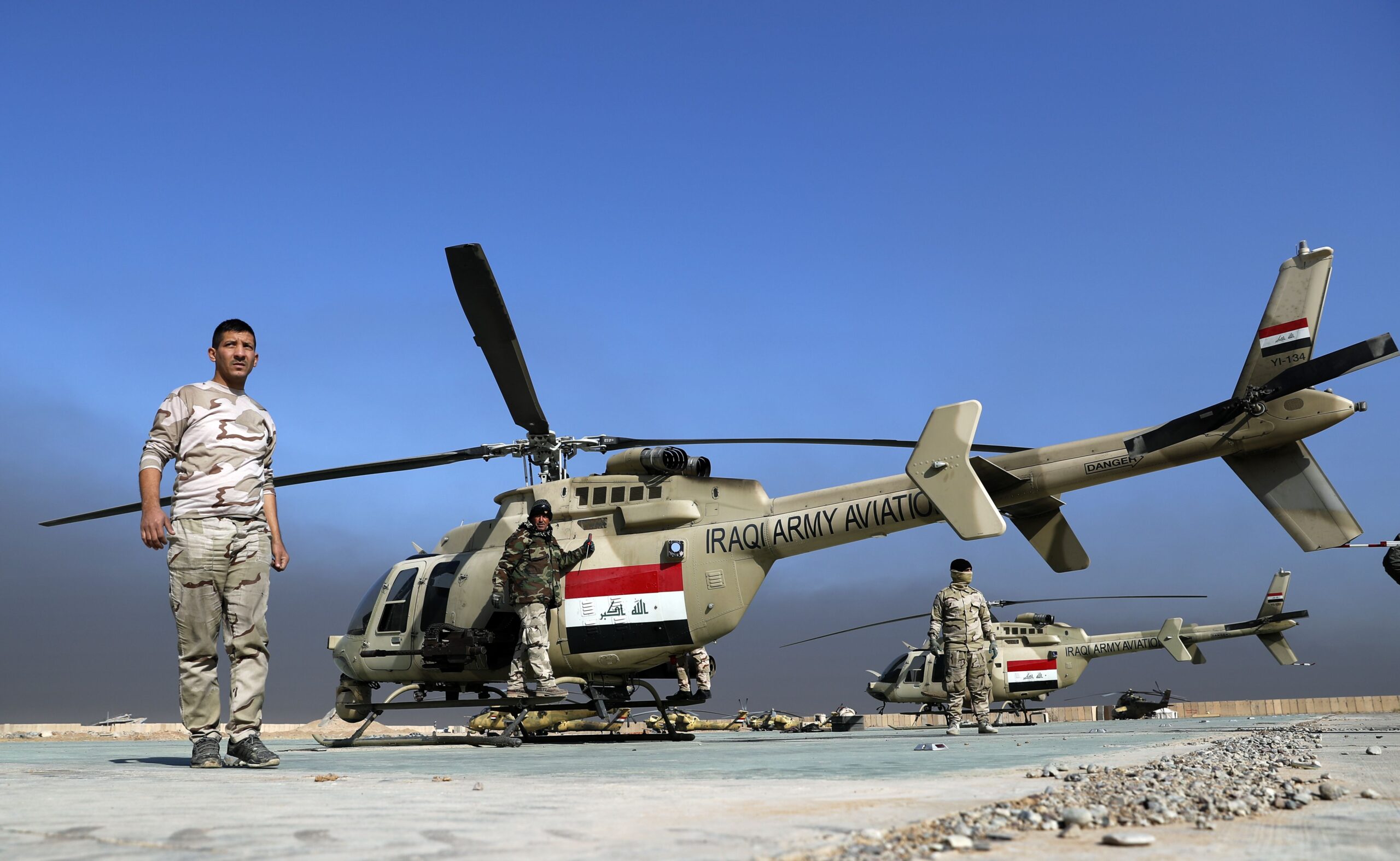
The 407 was also developed into the ARH-70 Arapaho for the U.S. Army’s Armed Reconnaissance Helicopter (ARH) program to replace the OH-58D Kiowa Warrior. That program was ultimately canceled.
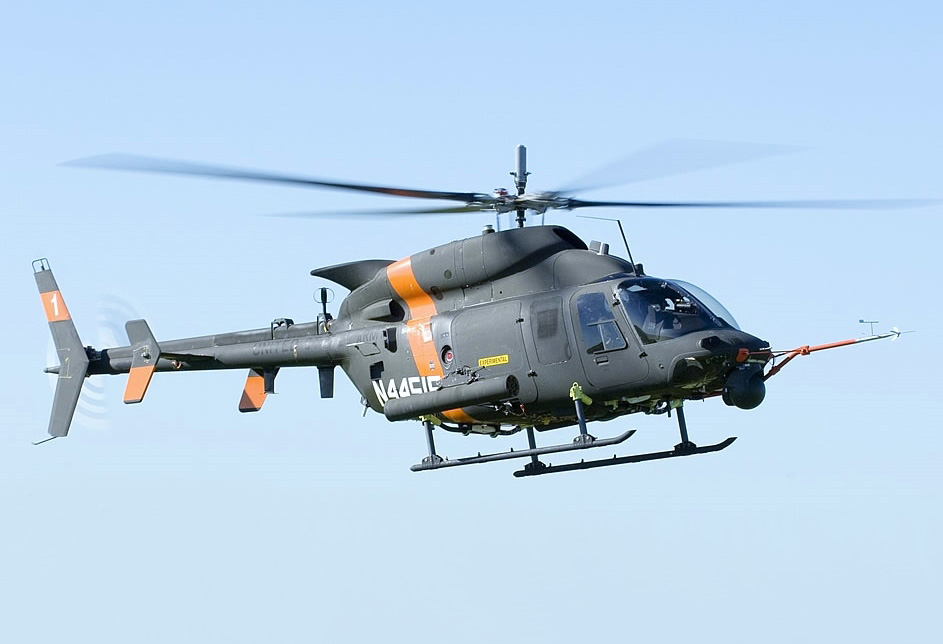
But these were fully militarized 407 variants, not adapted civilian models. Regardless, the type, which traces its roots directly back to the 206 Jet Ranger family, of which the now-retired OH-58 is a member, has proven military chops.
With the new armed civil 407, Bell intended to establish a baseline qualification for an armament kit for its civil helicopters that can be rapidly integrated when a customer orders one. It has performed stress and fatigue testing and standardized weapons integration for a “total package approach,” Deslatte said.
The in-house qualification clears Bell to sell the armed civil helicopters through direct commercial sales (DCS) rather than foreign military sales (FMS), which must be approved by Congress and the State Department, making the process much more efficient and less costly. The Army routinely purchases military and civil helicopters for partners and allies through the FMS process.
“We can also take a pilot already familiar with a Bell helicopter model and quickly transition him with minimal training,” Deslatte said.
Eventually, the company wants to offer special-mission versions of all its civil helicopter models for various military and paramilitary roles without necessarily arming them. While the 407 can perform the light attack and recon roles, the smaller 505 is marketed – and has been widely accepted – as a military training helicopter. The much larger 525, which can hold 16 passengers in its reconfigurable rear cabin, will eventually be offered in long-range search-and-rescue configuration, according to Deslatte.
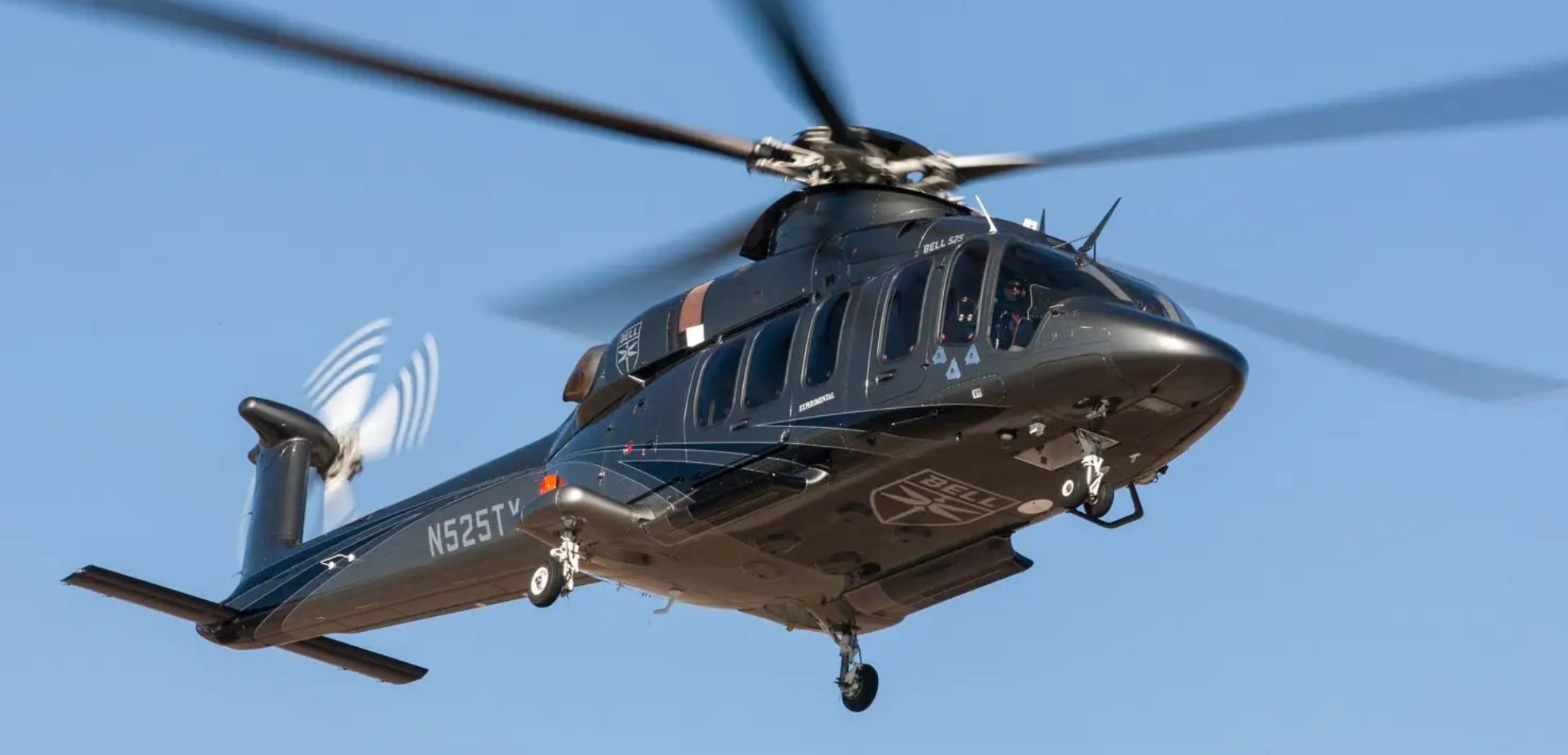
Rotorcraft like the Bell 407, a four-bladed, single-engine civil utility helicopter, are less expensive to buy and maintain and require less training to fly than an AH-1Z Viper attack helicopter or its utility cousin, the UH-1Y Venom. As noted earlier, the Army’s now-retired OH-58D Kiowa Warrior, also built by Bell, is directly related to the Bell 407, a pedigree that the company is leaning on in developing its new special-mission military aircraft. The venerable UH-1Y Huey is likewise from the same family of rotorcraft as the Bell 412.
“You can think of the 407 as the Zulu light and the 412 as the Yankee light,” Deslatte said, referring to the UH-1Y and AH-1Z flown by the Marine Corps.
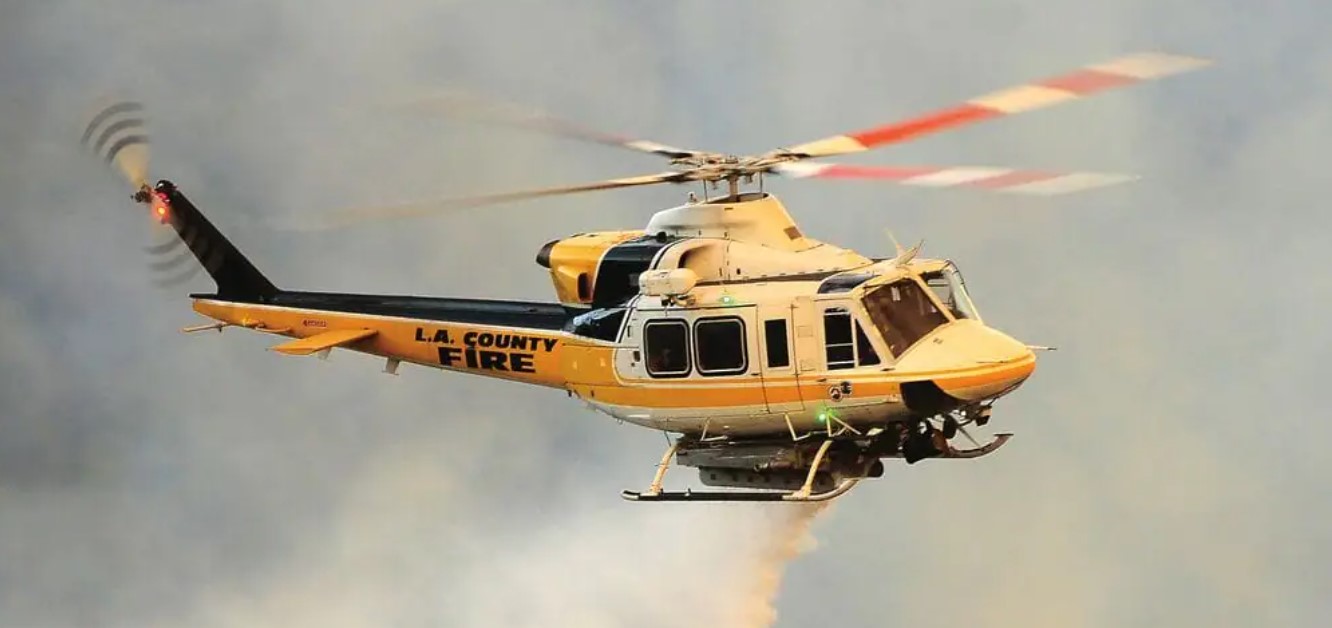
“When you talk about the areas of the world that need defensive capabilities on an aircraft, and you talk about some of the exquisite capabilities that we provide in U.S. military, whether it be an H-1 or a V-280, a Bell 360, those are exquisite capabilities,” Deslatte said. “Many of the threat environments in the world don’t really require that, and they don’t necessarily have the budget to support that. We’re focused on providing a different level of capability that’s a little more approachable, that we can sell either FMS or DCS, depending on the country.”
Instead of flying, as the U.S. Marine Corps does, AH-1Z attack helicopters in tandem with UH-1Y utility rotorcraft. Bell envisions less advanced militaries flying armed 407s with the larger Bell 412, Deslatte said.
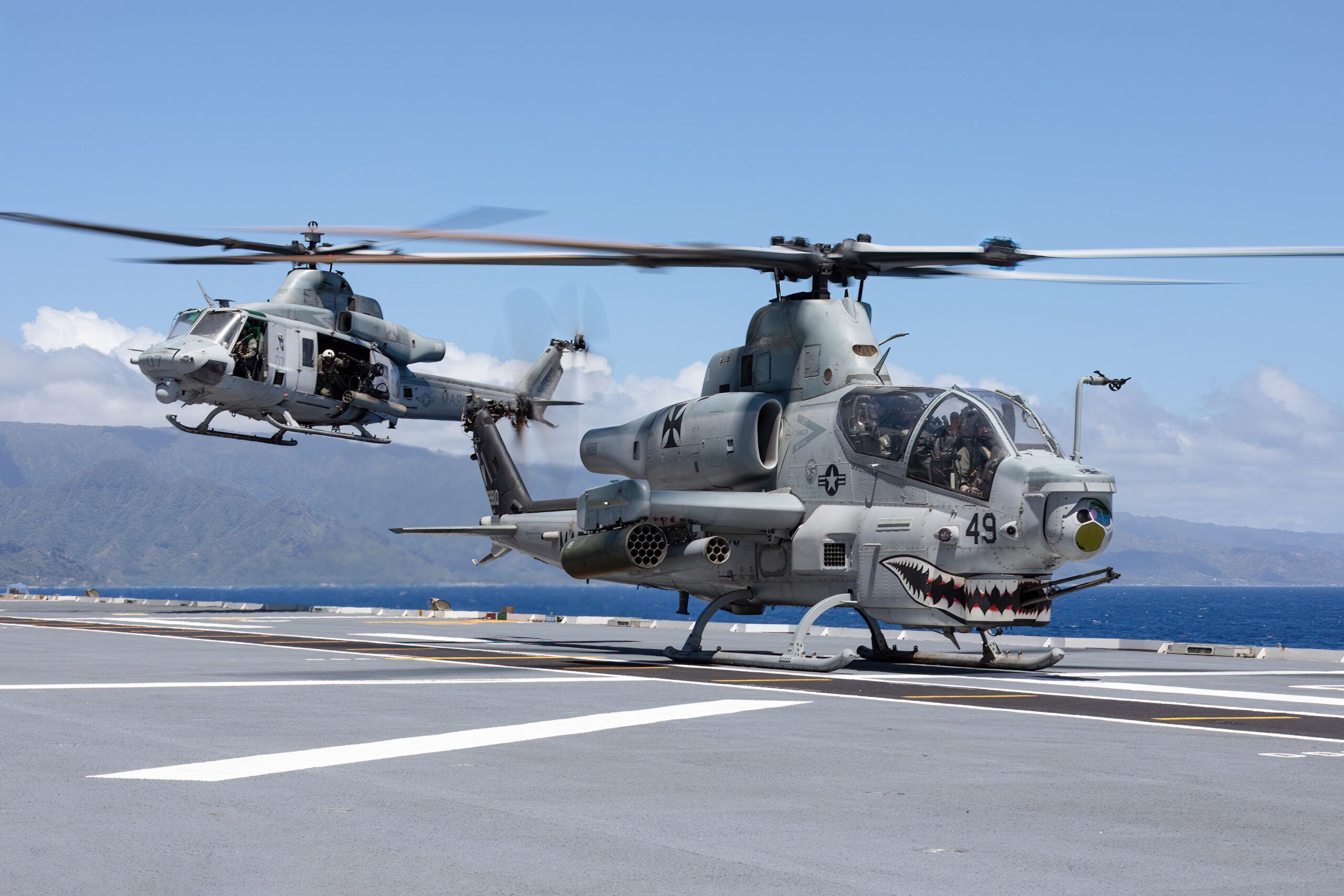
“Now you’ve got a very similar capability with a much lower cost of operation that can be quickly reconfigured, configurable into a VIP aircraft, if needed,” he said.
Jeff Schloesser, Bell’s executive vice president for strategic pursuits, said the sanctions placed on Russian industry as a result of its war on Ukraine would bleed it dry within a couple of years. Schloesser, a retired Army two-star general and former pilot with the 160th Special Operations Aviation Regiment (SOAR), said the market for Western-built light attack and utility helicopters in eastern Europe, Africa, and elsewhere (that traditionally operate Russian-originated rotorcraft) would open as access to spare parts and replacement aircraft is shut off.
“It’s not just that they don’t want to buy former Russian equipment or Russian equipment; they’re not going to be able to,” Schloesser told The War Zone and other reporters recently during a media day at Bell’s headquarters located at Fort Worth, Texas. “Those industries are going to essentially go into a very severe decline over the next couple of years, and as long as the sanctions stay put, my guess would be that the aircraft will rapidly become unflyable.”
Bell is positioning itself to offer relatively affordable special-mission aircraft to countries that, unable to fix or fly their Soviet-era rotorcraft, are left with few options other than expensive, more difficult-to-maintain models. Eastern Europe is seen as especially fertile ground for this concept, according to Bell.
Russia doesn’t really offer a helicopter in the same size category or capability as the 407. They offer big attack helicopters like the Ka-52 Alligator and Mi-24, or larger troop transports like the Mi-8/17. Bell could seek the latter market with a variant of the 525, but that helicopter is not yet certified and will be made available to civil operators first. With the 407, Bell is going after a specific market for a small, more affordable attack alternative to larger armed helicopters, both Russian- and U.S.-made.
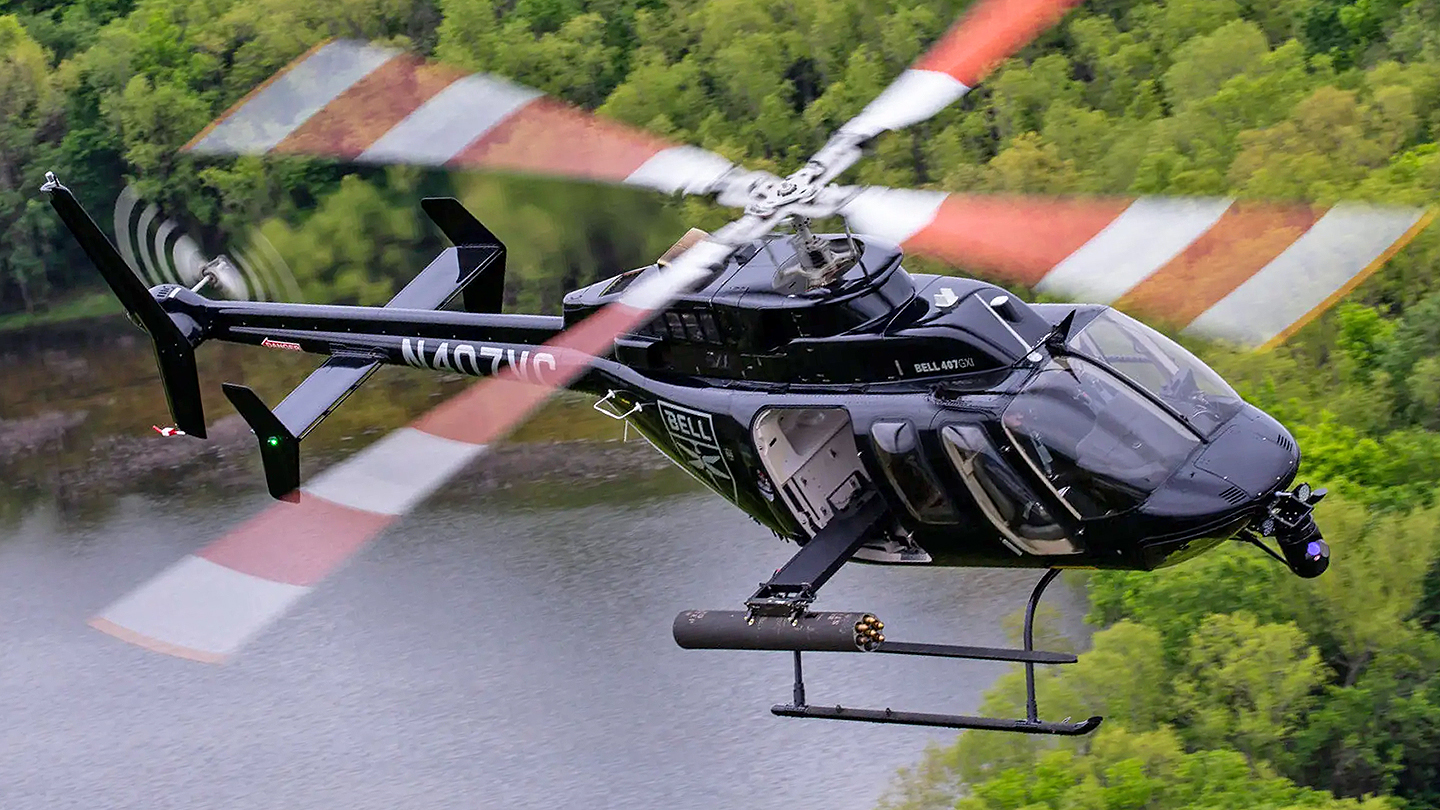
“Even if they didn’t think two years ago that they would want to go with a capability like what we’re describing, they’re going to end up for reasons of either public safety or, more importantly, paramilitary or military reasons you can see, them going to this kind of market,” Schloesser said.
“Not everybody needs an exquisite capability necessarily, like a Yankee [UH-1Y] or a Zulu [AH-1Z] or something like that. They can get by with the 407 and do very, very well, or a 412, for example. It’s a market that I think we’re just starting to see, and I think it will take off in a year or two. But this is not going to be a momentary thing. Those sanctions are going to devastate the Russian rotorcraft industry.”
The war in Ukraine continues to alter the market for military equipment far beyond the country’s borders. Europe has begun dramatically boosting procurement of U.S.-made armored ground vehicles, jet aircraft, and artillery systems.
Light but well armed commercially-available helicopters may just be next.
Editor’s note: The original version of this story identified a Minigun seen on the new armed Bell 407 GXi helicopter as being a Dillon Aero M134D. The gun is in actually Profense PF M134.
Contact the author: dan@thewarzone.com
